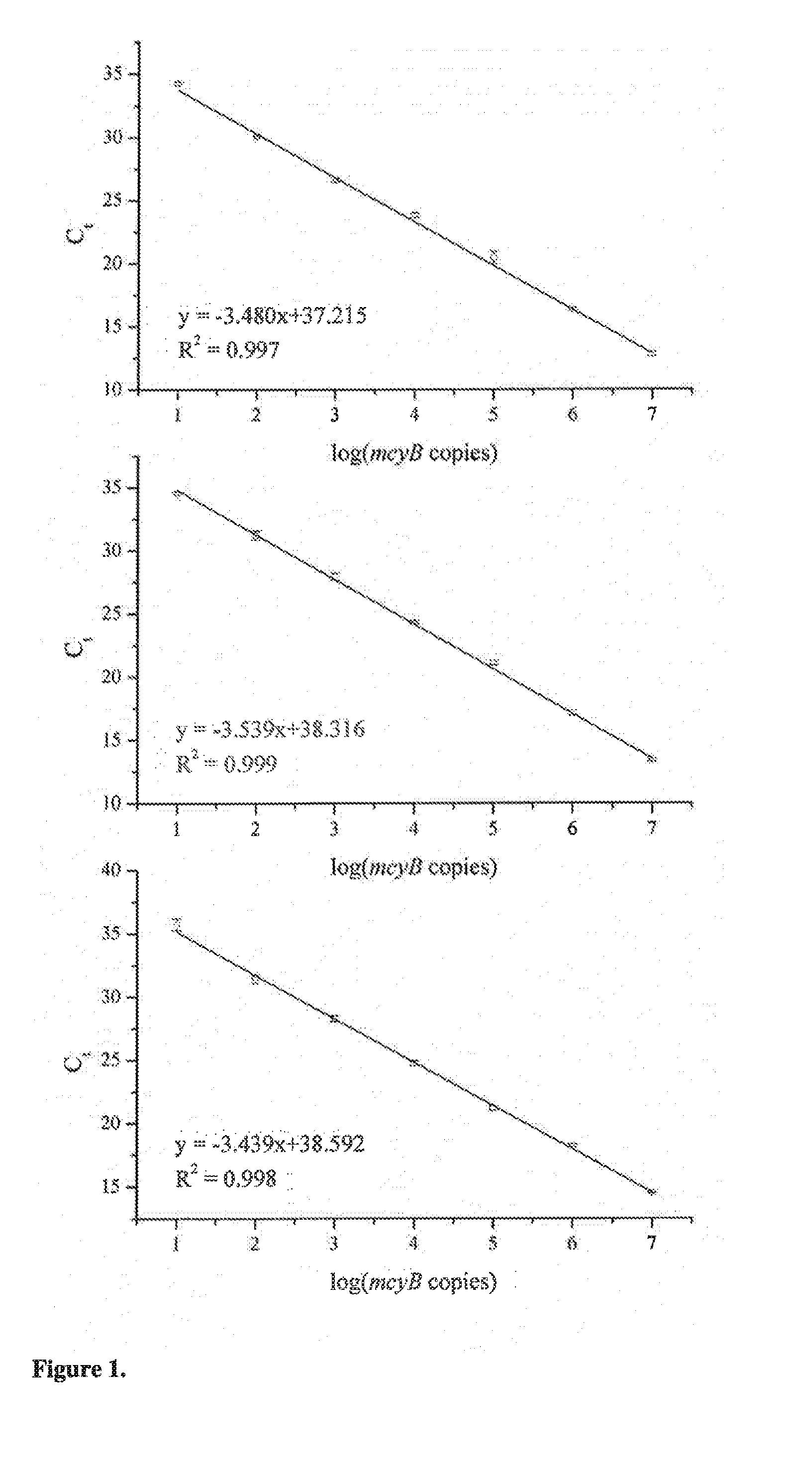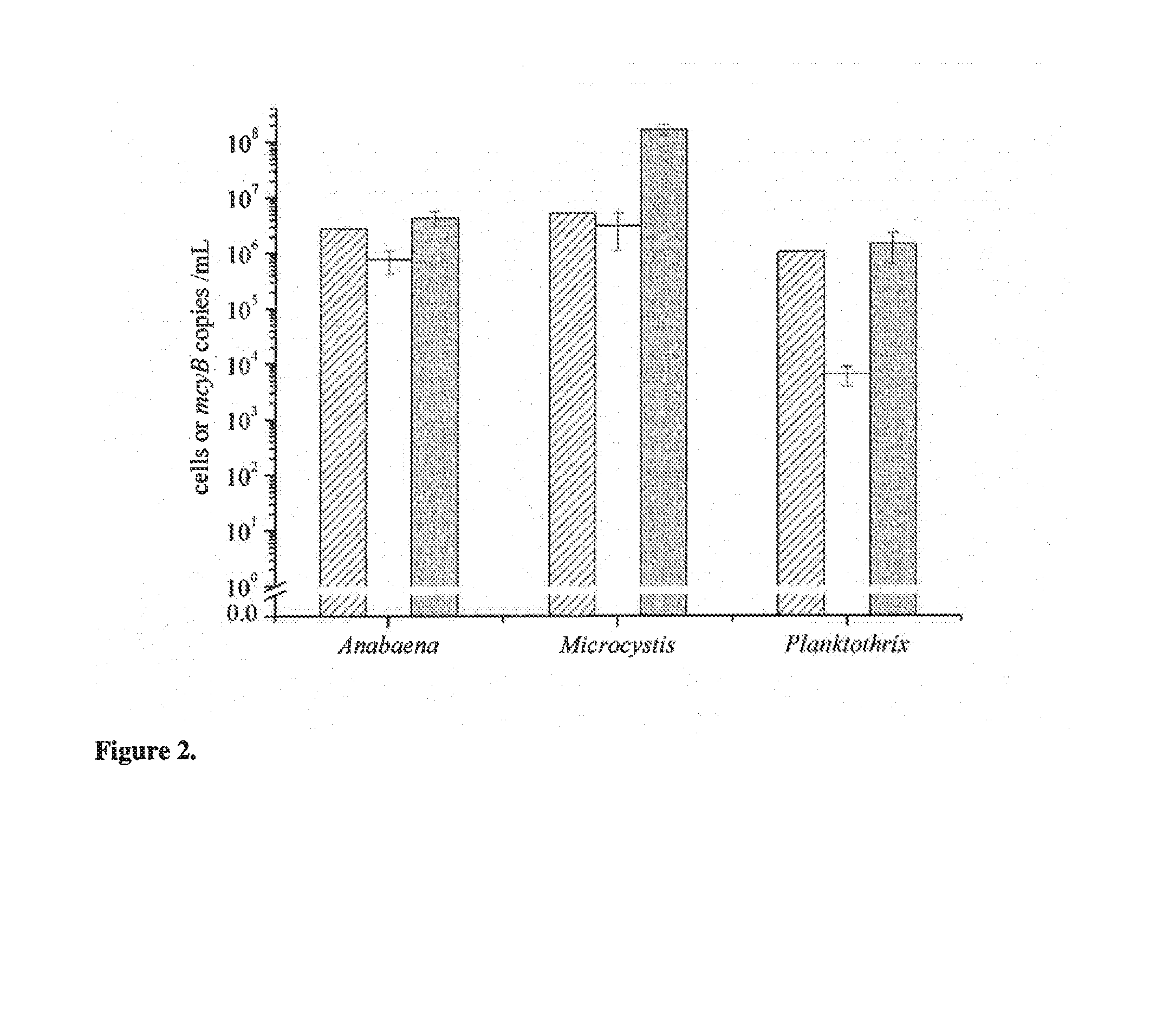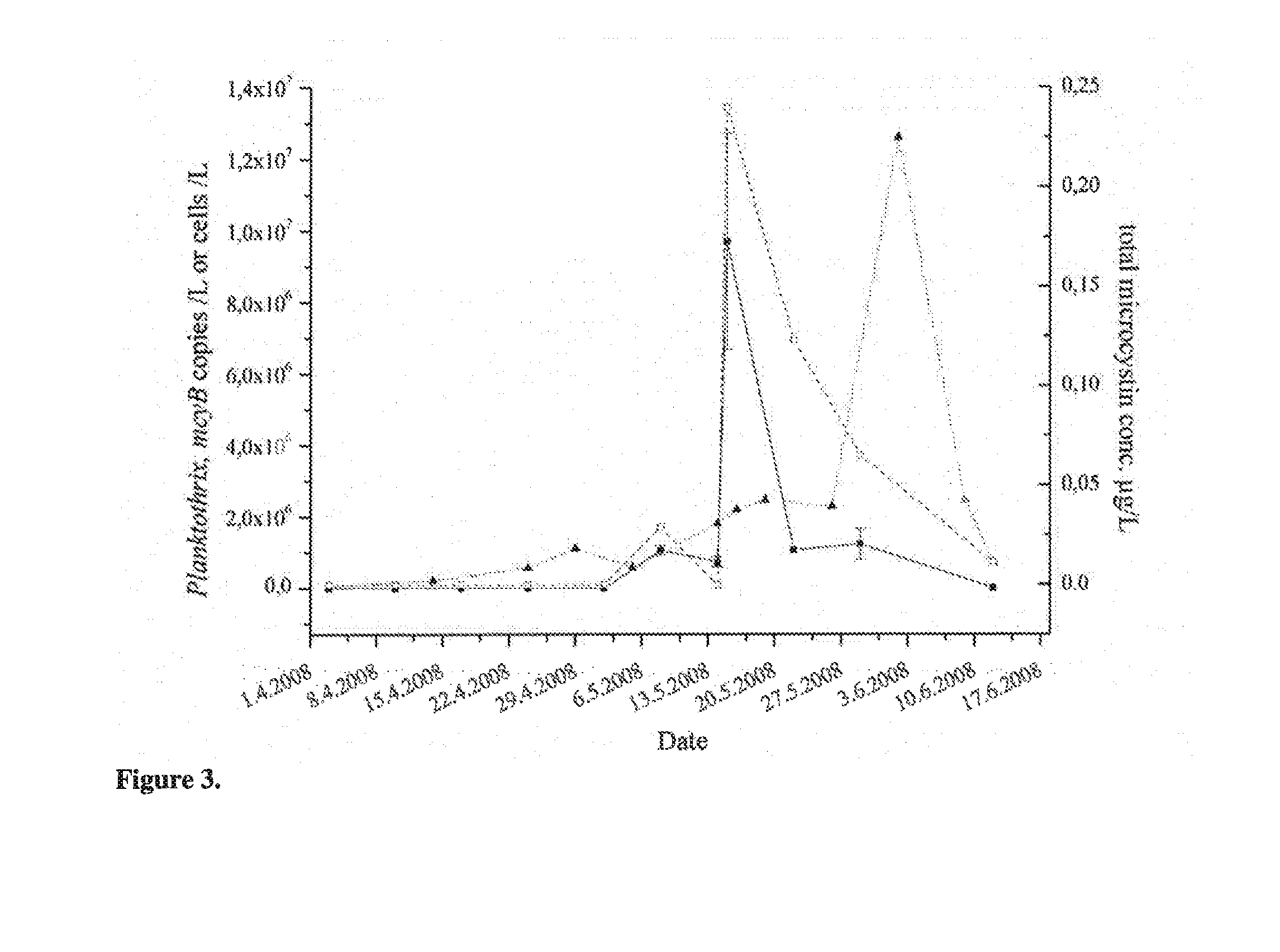Method and primers for the detection of microcystin-producing toxic cyanobacteria
a technology of toxic cyanobacteria and microcystin, which is applied in the detection field of toxic cyanobacteria produced by microcystin, can solve the problems of significant quantification error, increased risk of hepatic cancer, and difficult reliable identification of microcystin- and non-microcystin-producing cyanobacteria
- Summary
- Abstract
- Description
- Claims
- Application Information
AI Technical Summary
Benefits of technology
Problems solved by technology
Method used
Image
Examples
Embodiment Construction
[0014]The present invention is directed to a method for detecting the presence of microcystin-producing toxic cyanobacteria in a sample comprising the steps of:
[0015]a) performing lysis of the cells in said sample;
[0016]b) contacting nucleic acid obtained from the lysed cells in a polymerase chain reaction mix with primers specifically hybridizing with the nucleic acid sequence of mcyB gene present in Microcystis aeruginosa, Planktothrix agardhii and Anabaena sp., wherein said primers amplify at least part of the target sequence in the mcyB gene as set forth in SEQ ID NO:1, SEQ ID NO:2, and / or SEQ ID NO:3;
[0017]c) performing a polymerase chain reaction with a reaction mix obtained from step b) so that the sequences of said mcyB gene are specifically amplified, if said sequences are present in the sample; and
[0018]d) detecting the presence of amplified nucleid acid sequences, wherein the presence of amplified mcyB gene sequence is indicative of the presence of microcystin-producing t...
PUM
| Property | Measurement | Unit |
|---|---|---|
| Fraction | aaaaa | aaaaa |
| Time | aaaaa | aaaaa |
| Concentration | aaaaa | aaaaa |
Abstract
Description
Claims
Application Information
 Login to View More
Login to View More - R&D
- Intellectual Property
- Life Sciences
- Materials
- Tech Scout
- Unparalleled Data Quality
- Higher Quality Content
- 60% Fewer Hallucinations
Browse by: Latest US Patents, China's latest patents, Technical Efficacy Thesaurus, Application Domain, Technology Topic, Popular Technical Reports.
© 2025 PatSnap. All rights reserved.Legal|Privacy policy|Modern Slavery Act Transparency Statement|Sitemap|About US| Contact US: help@patsnap.com



